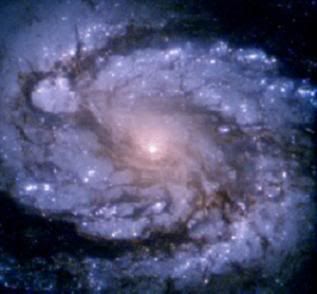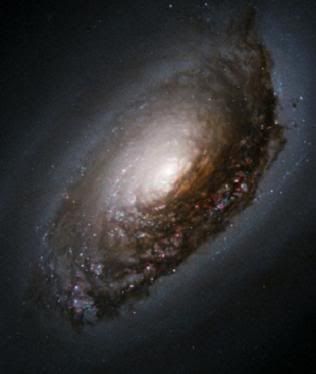Post by glactus on Feb 17, 2008 9:09:17 GMT

The Constellation of Coma Berenices contains the North Galactic Pole. The constellation is not particularly bright, having no stars brighter than fourth magnitude. b Comae Berenices is the brightest star in the constellation, at magnitude 4.26
Although Coma Berenices is not a large constellation, it contains eight Messier objects. The constellation is rich in galaxies, containing the Como cluster as well as the northern part of the Virgo cluster. There are also several globular clusters to be seen. These objects can be seen with minimal obscuration from dust because the constellation is not in the direction of the galactic plane. Notable objects are in the dropdown below:
M100 (NGC 4321)
M85 (NGC 4382)
M98 (NGC 4192)
M99 (NGC 4254)
M88 (NGC 4501)
M91 (NGC 4548)
M64 (NGC 4826)

M100
M100 is appropriately known as a Grand Design spiral galaxy. A large galaxy of over 100 billion or so stars and is a spiral, like our Milky Way. It is and tilted nearly face-on as seen from earth and is among the first spirals that have been discovered. The galaxy has two prominent arms of bright blue stars and several fainter arms. The blue stars in the arms are young hot and massive stars which formed recently from density perturbations caused by interactions with neighboring galaxies which are lying just outside our image.

M64 (NGC 4826) is known as the Black Eye Galaxy because of its prominent dark dust lane in front of the galaxy's bright nucleus. It is relatively nearby, at around 17 million light years away from Earth. The interstellar gas in the outer regions of the galaxy rotates in the opposite direction from that in the inner regions, leading astronomers to believe that at least one satellite galaxy had collided with it less than a billion years ago.

credits:
map and text:
en.wikipedia.org/wiki/Coma_Berenices
images: M100 NASA
apod.nasa.gov/apod/ap010203.html
imagews: M64 Hubble
hubblesite.org/gallery/album/entire_collection/pr2004004a/


